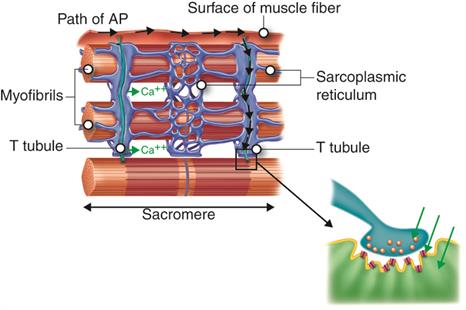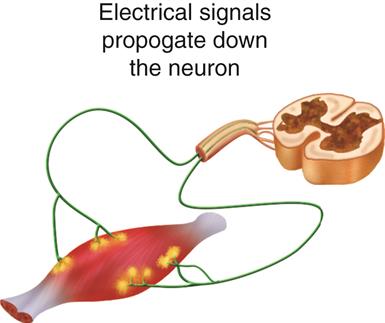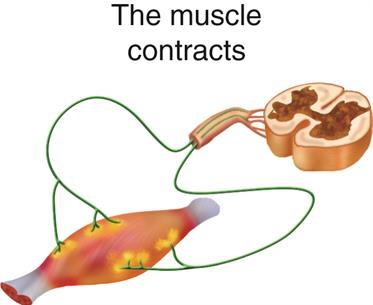PDF chapter test TRY NOW
In the previous topics we have studied about the voluntary and involuntary actions. Both these actions are controlled by the brain with one being controlled through the process of thinking and other being controlled without any thinking respectively.
Brain gathers information from different parts of the body, integrate and process them to make decisions, which will be communicated to the muscles for actions. Thus, all the information and processing done by the brain narrows down finally to the action of a muscle.
Here the question arises. How do the animal's muscles move? How the nerve impulses stimulating the muscle cell makes the muscle fibres move?

Neuromuscular Junction - Overall Mechanism
There are three steps involved in the movement of a muscle,
- A signal travels from the nervous system to the muscular system.
- Muscle fibers reorganize themselves that shortens the muscle- i.e., contraction of the muscle.
- Stoppage of signal from nervous system results in muscle fibers return to their original length i.e., relaxation of the muscle.
Video explaining the contraction of the muscle at cellular level
1. Traveling of signal from nervous system to the muscle
When the nervous system sends out a signal, muscle contraction occurs. A motor neuron transmits the signal, which is called as an action potential. The motor neuron meets a muscle cell at the neuromuscular junction. Muscular fibres are the cells that make up skeletal muscle tissue.

Signal passes from neuron to muscle
A chemical message is released by the motor neuron when the nervous system signal reaches the neuromuscular junction. A neurotransmitter called acetylcholine connects to receptors on the exterior of the muscle fibre to send a chemical message. A chemical reaction occurs within the muscle as a result of this connection.

Influx of calcium in synaptic cleft and release of chemicals to the muscle fibre
2. The contraction of the muscle
If we see at cellular level, the nerve impulses stimulate the chemical reaction in the muscle cells, which results in the change in the shape of the cell. This change in shape results in the shortening of the cell and so the movement of the muscle occurs.
The reason for the shortening of the cell remains in the chemical structure of muscle cells. Muscle cells are made up of special type of proteins called contractile proteins, which change their arrangement in the cellular structure when stimulated by a electrical nerve impulse, results in the contraction of the muscle.

The contraction of muscle
3. The relaxation of the muscle
When the motor neuron stimulation stops, the electrical nerve impulse at the neuromuscular junction will stop. As a result, the chemical reaction that shortens the muscle cells will stop and proteins will rearrange themselves in the muscle fibres. This rearrangement results into relaxation of the muscle.
Contraction and relaxation of muscles due to neuron signal
Reference:
https://courses.lumenlearning.com/cuny-csi-ap-1/chapter/neuromuscular-junctions-and-muscle-contractions/
